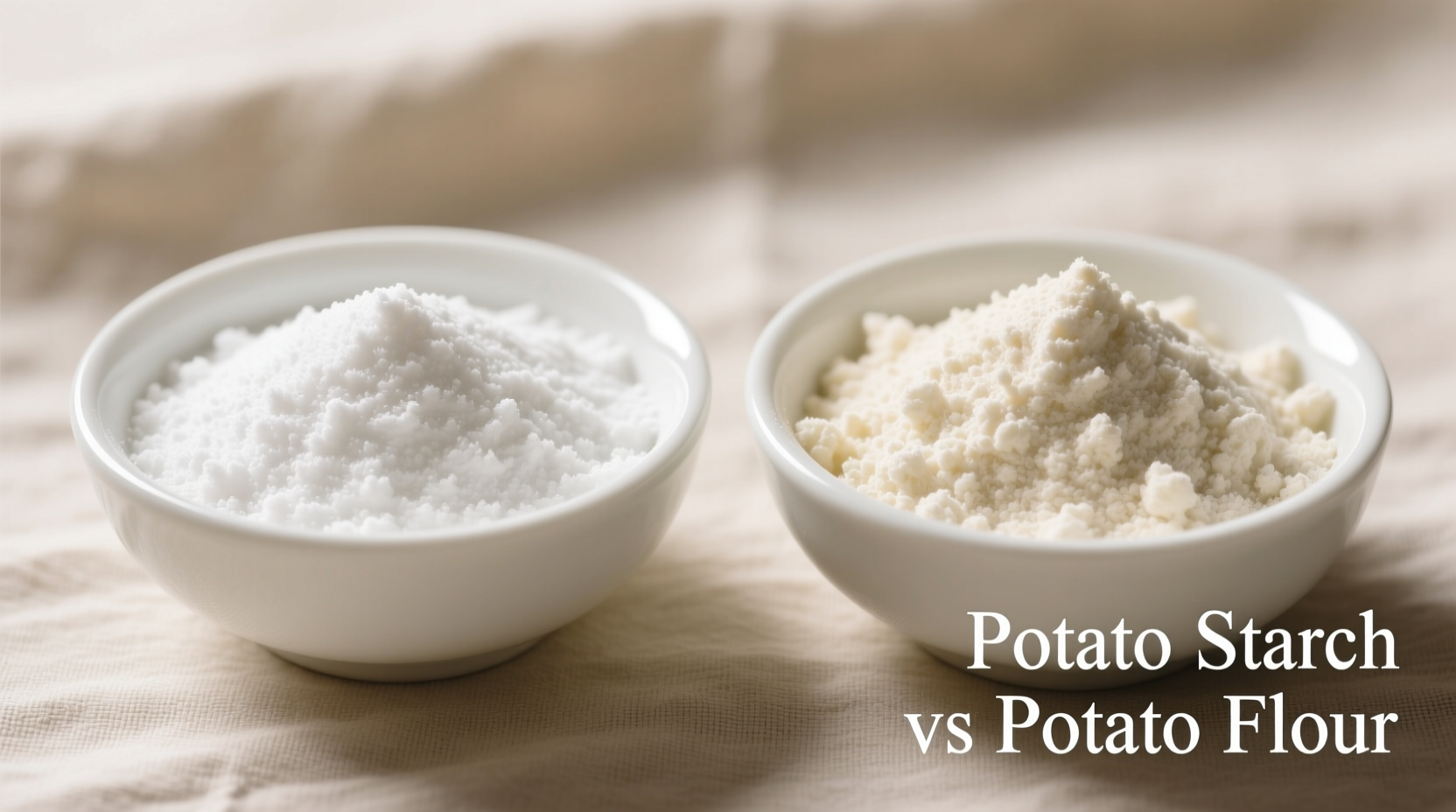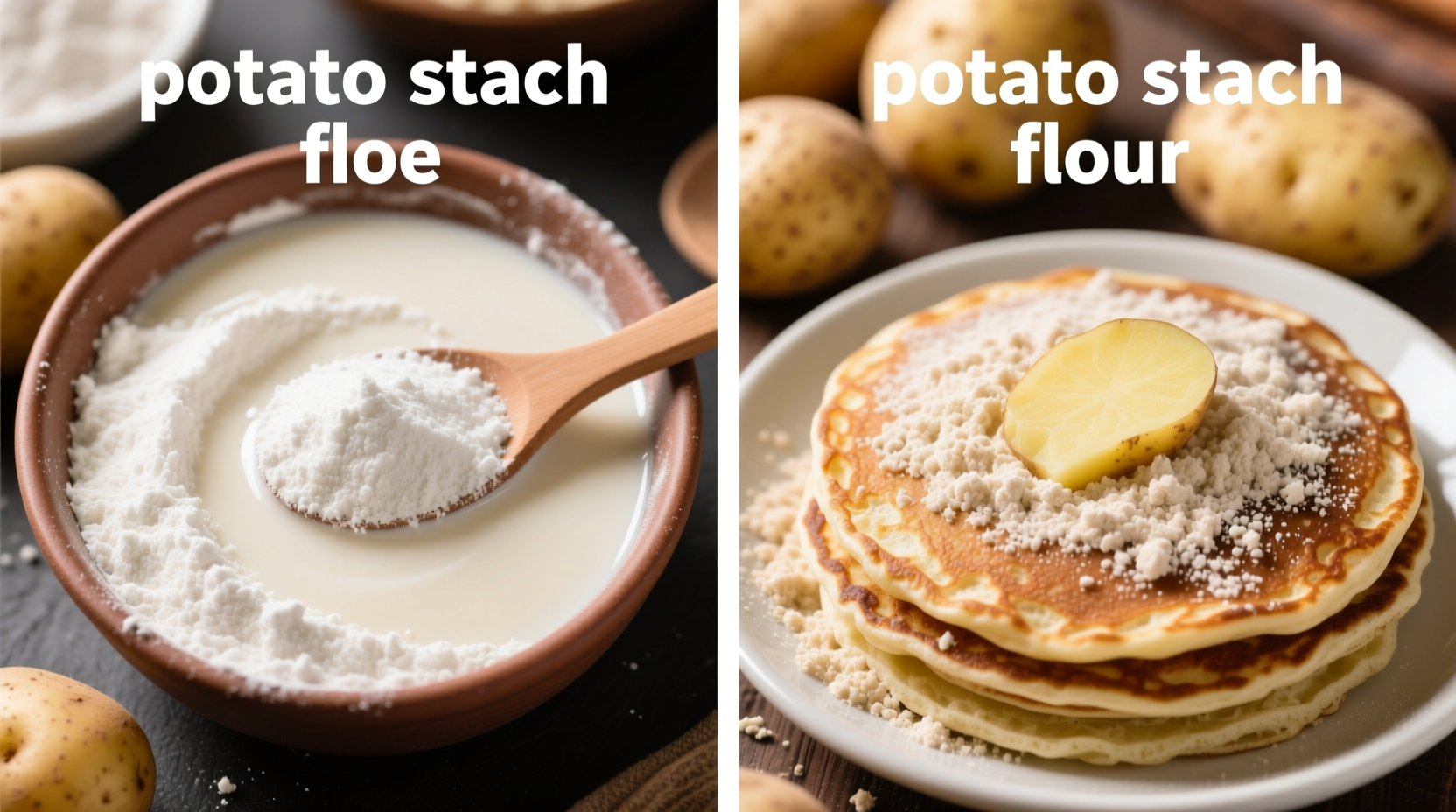When you're standing in the grocery aisle staring at these two similar-looking packages, understanding the distinction between potato starch and potato flour could make or break your recipe. As a professional chef who's worked with both ingredients extensively across different culinary applications, I can tell you they serve completely different purposes in the kitchen despite their similar names and origins.
What Exactly Are These Ingredients?
Potato starch is a fine, white powder created by washing crushed potatoes to extract their pure starch content, then drying the resulting liquid. This process removes all fiber, protein, and other components, leaving only the starch granules. It's naturally gluten-free and has exceptional thickening power.
In contrast, potato flour is made by dehydrating and grinding whole potatoes, including their fiber, protein, and other components. It has a beige color, distinct potato flavor, and contains about 80% starch along with other potato elements. While also gluten-free, it behaves very differently in recipes than pure starch.

| Characteristic | Potato Starch | Potato Flour |
|---|---|---|
| Production Process | Extracted from crushed potatoes, washed to isolate starch | Whole potatoes dehydrated and ground into flour |
| Color | Bright white | Beige or light tan |
| Flavor | Neutral, no potato taste | Distinct potato flavor |
| Thickening Power | Twice as powerful as wheat flour | Less effective thickener than starch |
| Texture in Finished Product | Creates clear, glossy finishes | Produces opaque, matte finishes |
| Best Used For | Gluten-free baking, sauces, soups | Breads, pancakes, adding potato flavor |
Practical Kitchen Applications: When to Use Which
Understanding the context boundaries for each ingredient prevents recipe disasters. Potato starch excels in applications where you need powerful thickening without altering flavor or color. Professional chefs rely on it for:
- Creating crystal-clear fruit pie fillings that don't cloud
- Perfecting gluten-free breads and cakes with better texture
- Making Asian-style noodles and dumpling wrappers
- Thickening delicate sauces where flour would create cloudiness
Potato flour shines when you want to incorporate actual potato flavor and texture:
- Traditional Jewish matzo balls and potato pancakes
- Adding moisture and flavor to bread recipes
- Creating authentic potato-based dishes like gnocchi
- Enhancing the texture of gluten-free baked goods
Can You Substitute One for the Other?
The common question about substituting potato starch for potato flour requires careful consideration. While possible in some recipes with adjustments, they're not direct substitutes. When substituting potato starch for potato flour:
- Use half the amount of potato starch (it's twice as powerful)
- Add additional liquid as starch absorbs more moisture
- Expect changes in flavor and texture
Substituting potato flour for potato starch rarely works well because:
- It won't thicken as effectively
- It imparts a noticeable potato flavor
- It creates a different texture in finished products
Storage and Shelf Life Differences
Proper storage affects performance. Potato starch maintains quality for 1-2 years when stored in an airtight container in a cool, dark place. Exposure to moisture causes clumping and reduces effectiveness. Potato flour, containing more components than pure starch, has a shorter shelf life of 6-12 months before it can develop off-flavors. Refrigeration extends both products' shelf life significantly.
Professional Tips for Best Results
When working with potato starch, always create a slurry with cold liquid before adding to hot mixtures to prevent clumping. For potato flour, sift it before use as it tends to compact. In gluten-free baking, many professional recipes combine potato starch with other starches like tapioca for optimal texture. Remember that potato starch breaks down at prolonged high temperatures, so add it near the end of cooking for sauces.
Can I use potato starch instead of potato flour in baking?
Not directly. Potato starch is twice as powerful as a thickener. If substituting, use half the amount of potato starch and increase liquid by 25%. Expect texture differences as potato flour adds potato flavor while starch doesn't.
Which is better for thickening soups and sauces?
Potato starch is superior for thickening soups and sauces as it creates a clear, glossy finish without altering flavor. Use 1 tablespoon potato starch mixed with 2 tablespoons cold water per cup of liquid for perfect thickening without lumps.
Is potato starch the same as cornstarch?
No, though both are pure starches. Potato starch has higher thickening power than cornstarch and works better at lower temperatures. It creates a clearer finish but breaks down faster at prolonged high heat compared to cornstarch.
Why does my potato starch clump when I add it to hot liquids?
Potato starch clumps when added directly to hot liquids because the outer layer gelatinizes instantly, preventing water from reaching the inner particles. Always mix potato starch with cold liquid first to create a smooth slurry before adding to hot mixtures.
Can I make potato starch at home?
While possible, homemade potato starch lacks the purity of commercial products. Grate raw potatoes, soak in water, then strain repeatedly until water runs clear. The settled starch at the bottom must be dried thoroughly, but commercial processing ensures consistent quality and removes all non-starch components.











 浙公网安备
33010002000092号
浙公网安备
33010002000092号 浙B2-20120091-4
浙B2-20120091-4